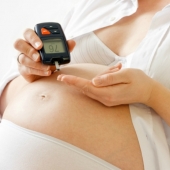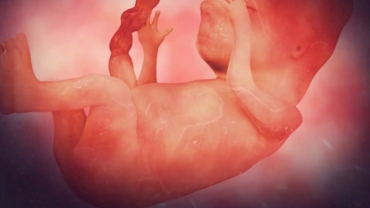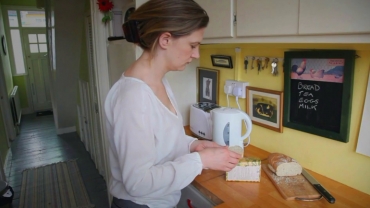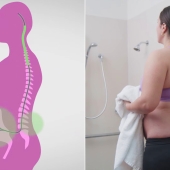
"Children whose mothers are depressed during pregnancy have a small increased risk of depression in adulthood," BBC News reports.
In this study researchers looked at whether antenatal depression (depression during pregnancy) and postnatal depression in mothers was associated with a higher risk of depression in their children in late adolescence.
They found that, at the age of 18, adolescents had a small increased risk of having depression if their mother had antenatal depression. However, the link between postnatal depression and later depression in the offspring was only present in cases where the mother had a lower level of education. The researchers took level of education to be a marker of socioeconomic status.
The strengths of this study include its size (there were more than 8,000 participants) and its length (around twenty years).
The main limitation is that it is still difficult to say for certain that maternal depression during pregnancy or after birth directly influences risk of depression in offspring later.
The researchers speculate that antenatal depression could increase levels of stress hormones which could affect the development of the baby. This cannot be proven by the evidence presented in this study. Depression is a complex condition, and likely to be influenced by both genetic and environmental factors.
Pregnant women should not worry unduly about whether their moods can affect their unborn child. The important thing is to seek help if you think you are experiencing symptoms of depression.
Where did the story come from?
The study was carried out by researchers from the University of Bristol, University of London, Oxford University and the University of Rochester in the US. It was funded by the Wellcome Trust, the National Institutes of Health in the US and the United Kingdom Medical Research Council.
The study was published in the peer-reviewed Journal of the American Association (JAMA) Archives of Psychiatry.
In general, it was covered accurately if uncritically in the press. The Daily Mail’s phrasing made the risk of depression in offspring of mothers who had been depressed in pregnancy seem larger than it is. And BBC News made an error when it reported that the study involved “more than 8,000 mothers with depression”. The study involved 8,937 mothers for whom data on antenatal and postnatal depression was available. This does not mean they were all depressed.
What kind of research was this?
This was a prospective cohort study that looked at whether there was a link between maternal antenatal and postnatal depression and depression in their offspring.
The authors point out that depression in late adolescence is a major public health issue. They say that there have been few studies looking at whether antenatal or postnatal depression in the mother is a risk factor.
A prospective cohort study is the best way to look at the link between exposures (in this case maternal antenatal or postnatal depression) and later outcomes (in this case offspring depression). The main limitation of the study design is that many factors can affect the risk of depression, and it is difficult to rule out the possibility that factors other than the one being studied are influencing any link seen.
Researchers can take steps to reduce the impact of these factors (known as confounders) on their analyses, but there is always the possibility that there are further confounders.
What did the research involve?
The researchers used data from a large study of pregnant women due to deliver in 1991 and 1992, called the Avon Longitudinal Study of Parents and Children (ALSPAC). They assessed antenatal and postnatal depression in the participating mothers, and then assessed whether any of their children had depression when they reached the age of 18.
The ALSPAC study recruited the children from 15,247 pregnancies. The current study looked at 8,937 of the women for whom data on antenatal depression (abbreviated to AND) and postnatal depression (PND) was available.
Symptoms of antenatal and postnatal depression in the mothers and in the fathers were measured using the Edinburgh Postnatal Depression Scale (EPDS). This is a standard 10-item self-report depression questionnaire used for postnatal depression.
The questionnaires were sent by post at approximately 18 and 32 weeks of the pregnancy and when the child was aged eight weeks and eight months.
The same depression scale was used to measure maternal depression repeatedly up until the child reached the age of 12 years.
Fathers also completed the depression questionnaire at 18 weeks of pregnancy and eight months postnatally.
Mothers also completed questionnaires about other factors that could affect results (potential confounders). This included:
• their education and their partner’s education
• maternal age
• social class
• number of other children
• history of depression before pregnancy
• smoking during pregnancy
• breastfeeding in the first year
• use of non-parental childcare within the first six months of the child’s life
When the children reached the age of 18, they were assessed for major depression using a self-administered, computerised version of a validated clinical interview. Only 4,566 of the offspring were assessed for depression at the age of 18.
Researchers then carried out various analyses of the association between both maternal AND and PND symptoms and depression in the offspring at the age of 18. They took into account the potential confounders in their analyses. They also analysed whether the mother’s education had an impact on any associations between AND and PND, and depression in the 18-year-old offspring. They carried out similar analyses for the fathers, but they focused on the mothers.
What were the basic results?
The researchers report that 11.6% of the 8,937 women reported symptoms which classified them as having AND, and 7.4% had symptoms which classified them as having PND.
When analysing the relationship between maternal and paternal perinatal depression and risk of offspring depression they found that:
After taking into account potential confounders, including later depression, antenatal depression in the mother was associated with depression in their offspring at 18 years. For every five-point increase in maternal depression score antenatally, the odds of the offspring having depression at the age of 18 years was 1.28 times higher (95% Confidence interval (CI), 1.08 to 1.51). This relationship did not appear to be affected by maternal education.
There was also an association between mothers with postnatal depression and depression in their offspring at 18 years, but this was weakened when potential confounders were taken into account, and the link varied depending on maternal education. Maternal PND in mothers with lower levels of education was associated with offspring depression (odds ratio [OR] 1.26, 95% CI 1.06 to 1.50 for a five-point increase in postnatal depression score). The link was not statistically significant among mothers with higher levels of education.
Fathers’ depression antenatally was not associated with offspring depression. Postnatally, paternal depression was associated with offspring depression but, again, this was limited to fathers who had lower levels of education.
How did the researchers interpret the results?
The authors say that their findings suggest that treating maternal depression during pregnancy could prevent depression in their offspring during adulthood. They also say that prioritising less advantaged mothers postnatally may be most effective in preventing depression in adolescent children.
They say that their findings suggest that while antenatal depression may be transmitted from mother to foetus by a biological mechanism, the risk of PND associated with offspring depression is environmental and can be modified by factors like psychosocial support. They also raise the possibility that transmission of depression from mother to child may be genetic.
Conclusion
The strengths of this study lie in its large sample, long-term follow-up and also the repeated measures of maternal depression conducted by researchers.
However, it also had some limitations:
Data was only available for about half the adolescents of mothers involved in the study, and those that took part tended to have higher socioeconomic status than the average for the whole original sample. This could introduce selection bias.
The method used to assess maternal depression was a valid way to measure depression symptoms, but a formal depression diagnosis requires a more thorough clinical interview.
Maternal depression was only measured up until the child reached 12 years of age, so it is uncertain if maternal depression after this point might have been associated with their offspring’s depression.
Although the study adjusted results for factors that might affect the risk of depression, such as parental income, it did not take into account other factors that could affect risk of depression in adolescents, such as external pressures relating to school and peer group.
The study did not assess whether the women were receiving treatment for their depression and how this might have influenced results.
Depression is a complex condition, and there are likely to be many factors influencing our risk of developing it. While this study suggests that there may be a link between maternal antenatal and postnatal depression and offspring depression, it cannot say for certain why this is the case, and whether these factors are directly influencing risk.
Further research is likely to continue in this area.
Depression during pregnancy and postnatally should always be taken seriously, and women who are experiencing depressive symptoms should seek help.
You may be depressed if, during the past month:
you have often been bothered by feeling down, depressed or hopeless
you take little or no pleasure in doing things that normally make you happy
If you experience either or both of these symptoms you should contact your GP for advice.
Source: http://www.nhs.uk/news/2013/10October/Pages/mothers-depression-linked-to-depression-in-offspring.aspx
- 54 views













